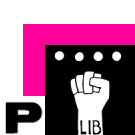Alexander R. Galloway - The Interface Effect: Difference between revisions
(→Notes) |
|||
| Line 11: | Line 11: | ||
Grounded in philosophy and cultural theory and driven by close readings of video games, software, television, painting, and other images, Galloway seeks to explain the logic of digital culture through an analysis of its most emblematic and ubiquitous manifestation – the interface.'' | Grounded in philosophy and cultural theory and driven by close readings of video games, software, television, painting, and other images, Galloway seeks to explain the logic of digital culture through an analysis of its most emblematic and ubiquitous manifestation – the interface.'' | ||
== Intro == | |||
<br> | |||
<i>"The goal of the book is | |||
two fold, to define the interface , but also to interpret it. Inter | |||
faces are not simply objects or boundary points . They are | |||
autonomous zones of activity. I n terface s are not things, but | |||
rather processes that e ffect a result of whatever kind. For this | |||
reason I will be speaking not so much about particular inter | |||
face | |||
obj ects (screens, keyboards) , but interface effects. And in | |||
speaking about them I will not be satisfied just to say an inter | |||
face | |||
is de fined in such and such a way, but to show how it | |||
exists that way for specific social and historical reasons. I nter | |||
faces | |||
themselves are effects, in that they bring about transfor | |||
mations | |||
in material state s . But at the same time interfaces are | |||
themselves the e ffects of other things, and thus tell the story | |||
of the larger forces that engender them."</i> | |||
== Notes == | == Notes == | ||
yet to be filled | yet to be filled | ||
Revision as of 16:55, 28 September 2021
- Pad notes about interface (not from me but from XPUB 3)
- Bootleg Library link
Description (from bootleg)
Description :
Interfaces are back, or perhaps they never left. The familiar Socratic conceit from the Phaedrus, of communication as the process of writing directly on the soul of the other, has returned to center stage in today's discussions of culture and media. Indeed Western thought has long construed media as a grand choice between two kinds of interfaces. Following the optimistic path, media seamlessly interface self and other in a transparent and immediate connection. But, following the pessimistic path, media are the obstacles to direct communion, disintegrating self and other into misunderstanding and contradiction. In other words, media interfaces are either clear or complicated, either beautiful or deceptive, either already known or endlessly interpretable.
Recognizing the limits of either path, Galloway charts an alternative course by considering the interface as an autonomous zone of aesthetic activity, guided by its own logic and its own ends: the interface effect. Rather than praising user-friendly interfaces that work well, or castigating those that work poorly, this book considers the unworkable nature of all interfaces, from windows and doors to screens and keyboards. Considered allegorically, such thresholds do not so much tell the story of their own operations but beckon outward into the realm of social and political life, and in so doing ask a question to which the political interpretation of interfaces is the only coherent answer.
Grounded in philosophy and cultural theory and driven by close readings of video games, software, television, painting, and other images, Galloway seeks to explain the logic of digital culture through an analysis of its most emblematic and ubiquitous manifestation – the interface.
Intro
"The goal of the book is
two fold, to define the interface , but also to interpret it. Inter
faces are not simply objects or boundary points . They are
autonomous zones of activity. I n terface s are not things, but
rather processes that e ffect a result of whatever kind. For this
reason I will be speaking not so much about particular inter
face
obj ects (screens, keyboards) , but interface effects. And in
speaking about them I will not be satisfied just to say an inter
face
is de fined in such and such a way, but to show how it
exists that way for specific social and historical reasons. I nter
faces
themselves are effects, in that they bring about transfor
mations
in material state s . But at the same time interfaces are
themselves the e ffects of other things, and thus tell the story
of the larger forces that engender them."
Notes
yet to be filled
